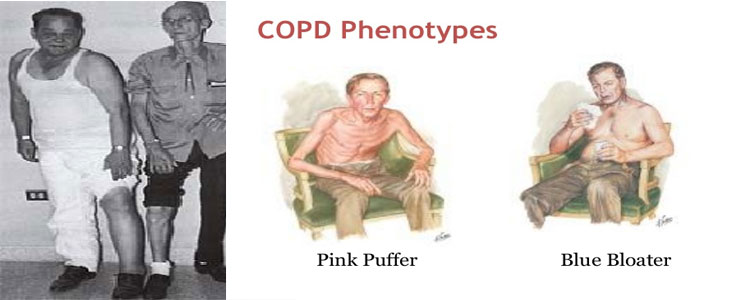CHRONIC OBSTRUCTIVE PULMONARY DISEASE
What is COPD?
We often hear the term chronic obstructive pulmonary disease (COPD), without knowing that it is another, 'perhaps the worst' effect of smoking. Cigarette smoke irritates the lung, causing inflammation and gradually destroying it. The results of this destruction are the prevention of the normal air-flow into the bronchi and the patient to experience dyspnea. In the early stages, shortness of breath is small, but in the end it becomes unbearable and makes the patient unable to perform any activity, making his daily life difficult.
How is it diagnosed?
It is diagnosed with spirometry.
How the disease progresses ?
The disease may progress in two forms which often overlap.
The chronic bronchitis is the inflammation of the bronchi. Initially, the patient 'who is usually overweight' has a cough with sputum. Progressive dyspnoea and infections follow. The end result is respiratory failure accompanied by edematous limbs, cyanosis (blue skin color) and the patient needs a permanent supply of oxygen. Bronchodilator drugs can help the patient and relieve him of his symptoms, especially when the disease exacerbates.

The Emphysema begins with the destruction of the alveoli. Alveoli are responsible for the intake of atmospheric oxygen and the elimination of carbon dioxide produced in our body by combustion. This destruction leads to the creation of permanent lesions in the lung tissue. Then the patient has more dyspnea associated with weight loss. Medication in this case is mostly ineffective as patients experiencing the disease remain practically "helpless".

Early diagnosis of COPD and cessation of smoking when the disease is at an early stage is of major importance and smokers should understand that it is not "normal" to have dyspnoea because they smoke. This feeling of "justified" dyspnea should be the reason for a visit to the pulmonologist.




